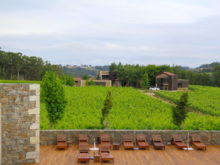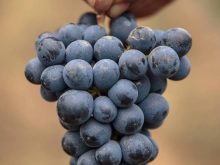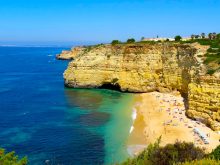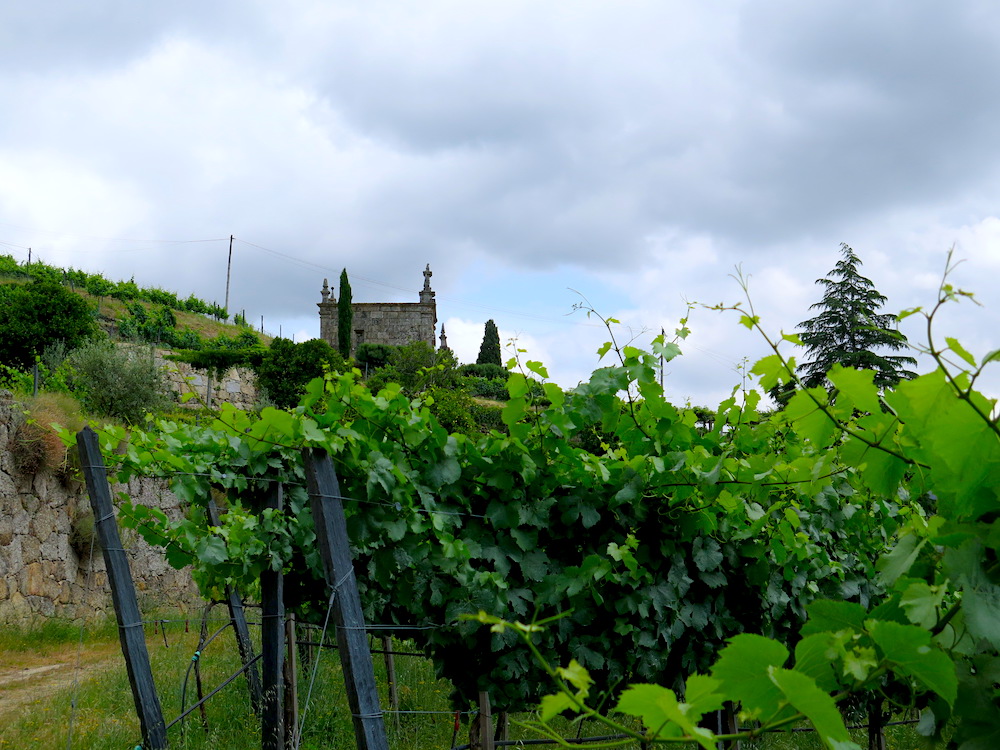
For another reminder that small doesn’t necessarily mean less, consider that Portugal consumes more wine per capita than Spain, France, and Italy, the top three wine-producing countries in the world. In fact, according to OIV (International Organisation of Vine and Wine), Portugal has the world’s highest per capita consumption of wine with an average annual consumption of 54 liters. In other words, wine in Portugal is as integral to life as water—and especially in Vinho Verde in the northwest corner of the country.
During the decades of Salazar’s dictatorship, Portuguese viticulture was most often associated with mass-produced wines from cooperative wineries. For many Americans, Portuguese wine remained synonymous with the iconic stoneware bottles of Lancers, which were introduced to American troops during World War II, as well as the distinctive flattened pot-belly bottles of Mateus Rosé that invariably became iconic candleholders in innumerable American homes and restaurants.

Fortunately for Portuguese oenophiles, the years following the Carnation Revolution in 1974 and Portugal’s entrance into the EU in 1986 have been a boon for Portuguese viticulture. In the past few decades, numerous independent wineries have opened in former quintas, the Portuguese term for large country estates often used for agricultural purposes.
As a center of viticulture since the Bronze Age, Portugal has become Europe’s fifth-largest wine-producing region, in spite of comprising only 2% of the total EU area (and about 2% of the EU population). The country’s varied topography, from verdant plains to cork forests, with a maritime climate to the west and dry conditions in the east, provides a diverse terroir that produces a broad range of wines—from the light and fresh signature wines of Vinho Verde to the richly complex reds and hearty port associated with the Douro. Roughly the size of the state of Maine, Portugal cultivates more than 250 native grapes in 31 DOCs, the largest of which is Vinho Verde.

Designated a specific region in 1908 and a DOC in 1984, Vinho Verde is divided into nine sub-regions named for towns or rivers. While the term “vinho verde” literally means green wine (or, arguably, “young wine”), the appellation has become something of a misnomer amidst the region’s renaissance. Alongside increased professionalization and innovation, a new generation of winemakers has been producing wines of notable complexity marked by increasing international acclaim.
The origins of Vinho Verde viticulture date from the time of Roman philosophers Seneca the Younger and Pliny the Elder, both of whom wrote about the vines in the area. According to 16th- and 17th-century shipping logs, the wines of Vinho Verde were among the first Portuguese wines exported to the northern European markets alongside boatloads of bacalhau.
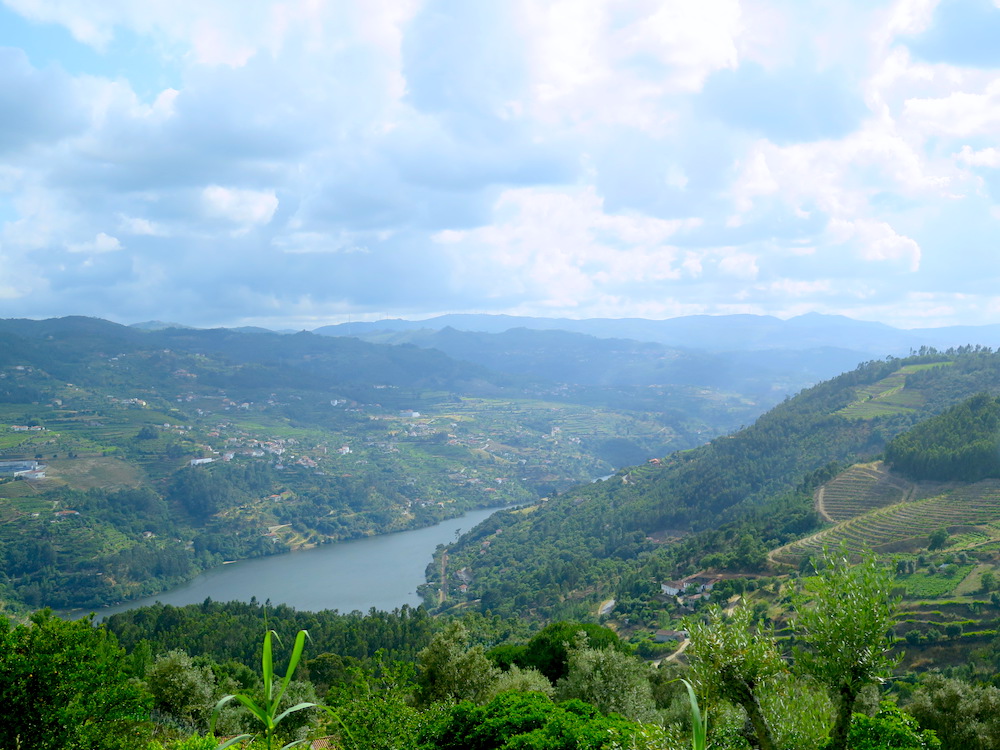
Today, Vinho Verde supports more than 19,000 growers who farm in excess of 50,000 acres to produce an average annual yield of 75 million liters of wine that is exported to more than 90 international markets. More than 80% of Vinho Verde wine is produced from white grapes, which include Alvarinho, Avesso, Azal, Arinto, Loureiro, and Trajadura.
Should you have the good fortune to wander the region amidst the splendor of spring, you’ll recognize immediately that Vinho Verde bears its name for the proliferation of lush flora that bursts into a dizzying display of every shade of green under the sun. As Manuel Carvalho wrote in Cores do Vinho Verde (1997), “…as far as the eye can see, there is a harmony of green that personifies the entire region.” Amidst such natural beauty, the wines of Vinho Verde are the perfect complement.
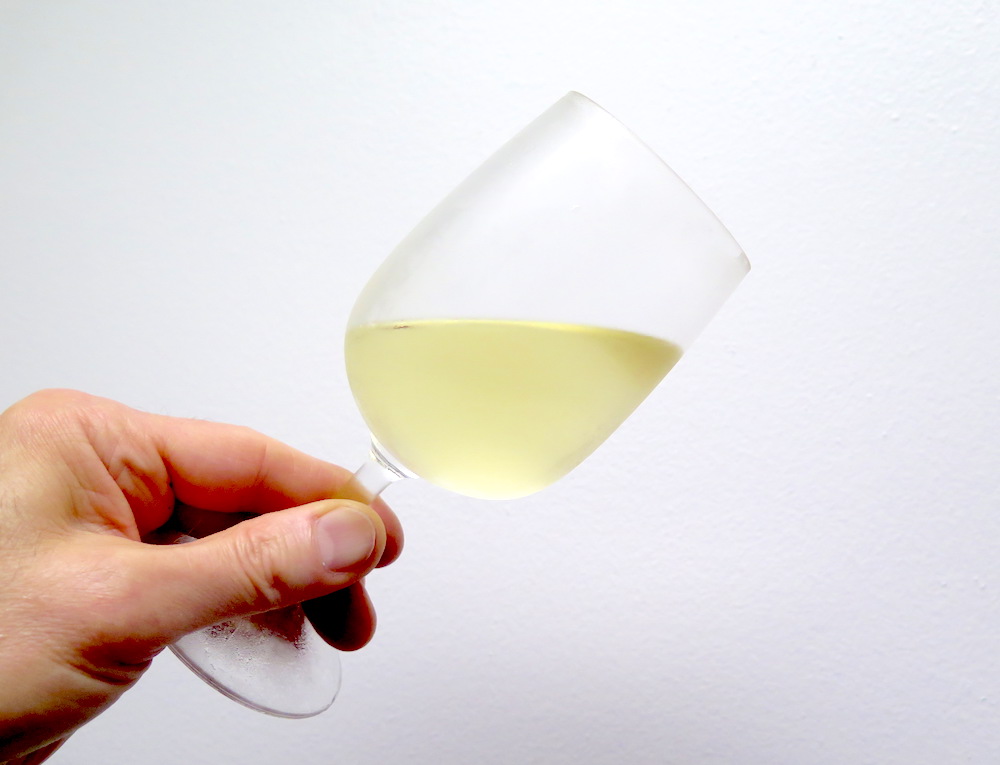
Quinta da Calçada Exuberant 2018: Wine lovers clamor for dry Rieslings, enamored of the grape’s distinctive floral botanicals—and yet increasingly, oenophiles are smitten with Alvarinho (or Albariño, as the grape is known in Spain).
When the grape first arrived on the Iberian Peninsula in the 12th century, the aromatic white grape was thought to be a relative of Riesling—thanks to its floral profile and high acidity. One of the first grapes to be bottled as a monovarietal, Alvarinho is grown in the cool, hilly region of Vinho Verde, where, increasingly, it is blended with Loureiro.
Located in the UNESCO-cited town of Amarante, Quinta da Calçada has been producing wine since 1917, thanks to the vision of António do Lago Cerqueira who also had the foresight to redesign a magnificent 16th-century palace known today as Casa da Calçada. A member of Relais & Châteaux, the luxury boutique hotel provides a splendid setting for the enjoyment of the house wines.
Quinta da Calçada Exuberant 2018 offers a pleasing introduction to the signature Vinho Verde blend of Loureiro and Alvarinho. Pale citrus in color, the wine presents an intensely aromatic bouquet of tropical fruits that opens in the mouth with a soft ripeness that lingers in the finish. Notably dry, there is also a bounty of fresh fruit with a lively acidity in the mouth. Easy to drink immediately, this wine would evolve nicely in the bottle for 3-5 years.
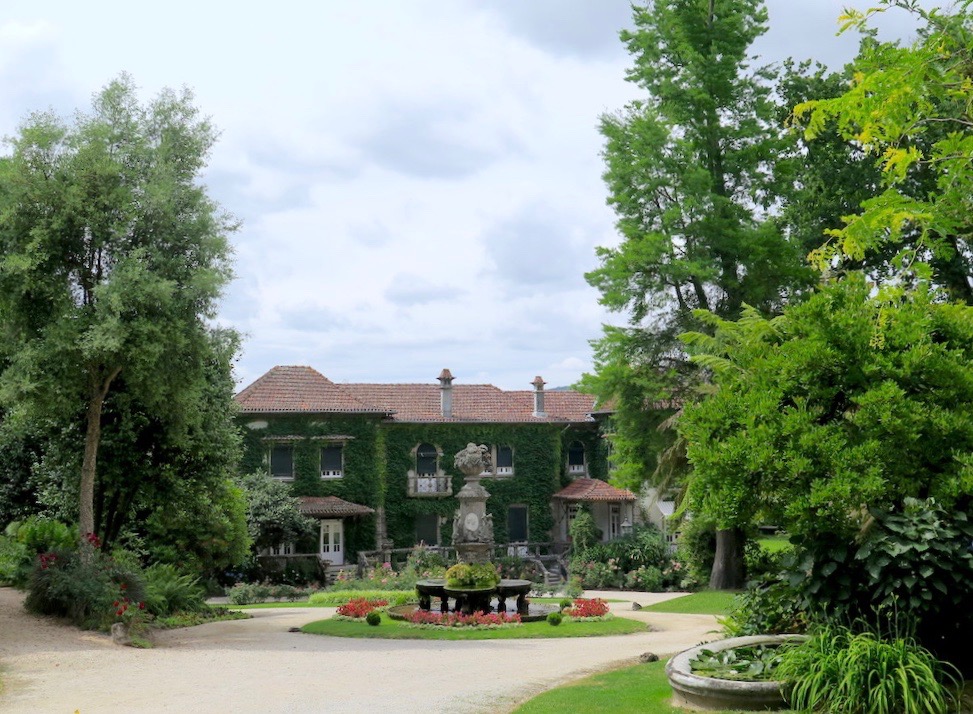
Aveleda Loureiro 2018: Secluded behind high granite walls in the town of Penafiel, Quinta da Aveleda dates to the 16th century—with a winery from 1870 founded by Manoel Pedro Guedes who left his political life to dedicate himself to the quinta and its extensive parkland and grounds. Throughout the subsequent five generations, the Guedes family has nurtured the historic property while producing exemplary wines of the region. Today, Aveleda is the largest exporter of Portuguese wine with 35% of market share.
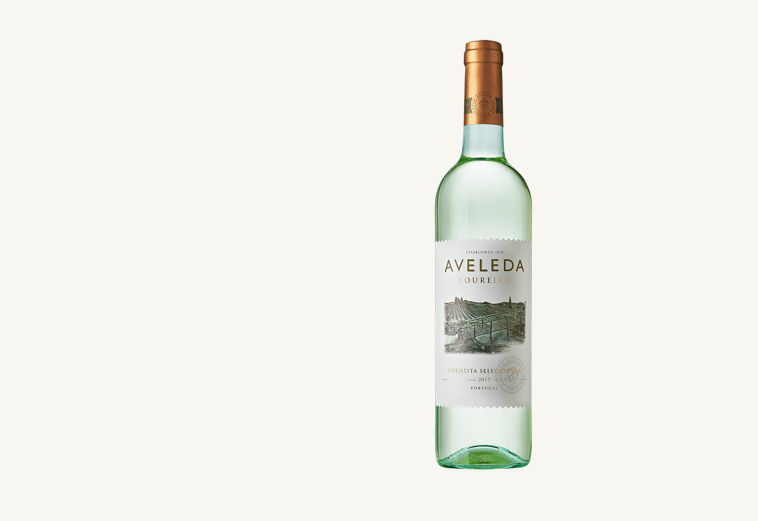
One of the most iconic grapes of the Vinho Verde region, Loureiro is notable for its floral notes on the nose: a beautiful bouquet of white flowers and light citrus. Aveleda Loureiro is a splendid expression of this signature monovarietal, albeit with a fuller body and smooth texture. For many oenophiles, Loureiro evokes comparisons with Riesling, and particularly for its velvety structure, which is revealed in the softness of this wine alongside a crisp finish. Pale and light in the glass, Aveleda Loureiro displays an impressive harmony of aromas marked by jasmine, citron, and grapefruit. Elegant with a restrained exuberance, Aveleda Loureiro serves as a testament to the mastery of Aveleda viticulture.
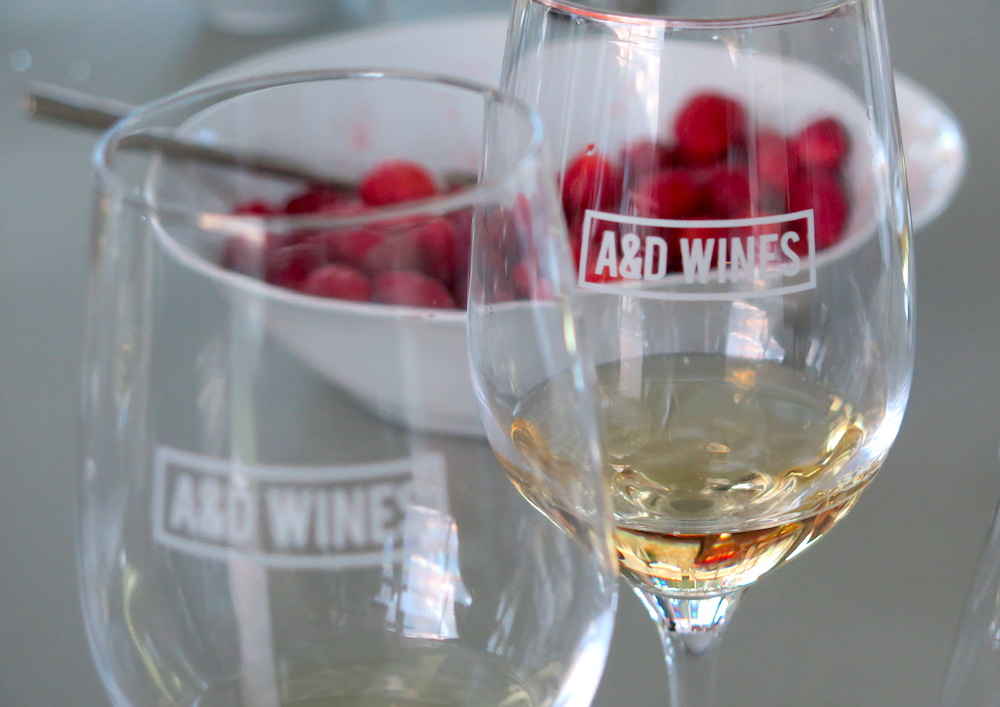
A&D Wines Monólogo Avesso P67 2018: Named for the owners Alexandre and Dialina, A&D Wines is the passion project of two individuals with roots in the Baião region. Established in 2005, A&D Wines now encompasses 111 acres of vineyards in three distinct estates, one of which is Quinta de Santa Teresa, an architectural landmark with extraordinary panoramic vistas of the surrounding Baião and Douro region.
One of A&D Wine’s recent innovative projects is the 2016 introduction of its Monólogo line of monovarietals named for their respective parcels. Produced in Quinta de Santa Teresa, A&D Wines Monólogo Avesso P67 2018 showcases Vinho Verde’s Avesso grape. Traditionally, Avesso wines offer a lower acidity than most Vinho Verde grapes, hence the name: Portuguese for “reverse” or “opposite.”
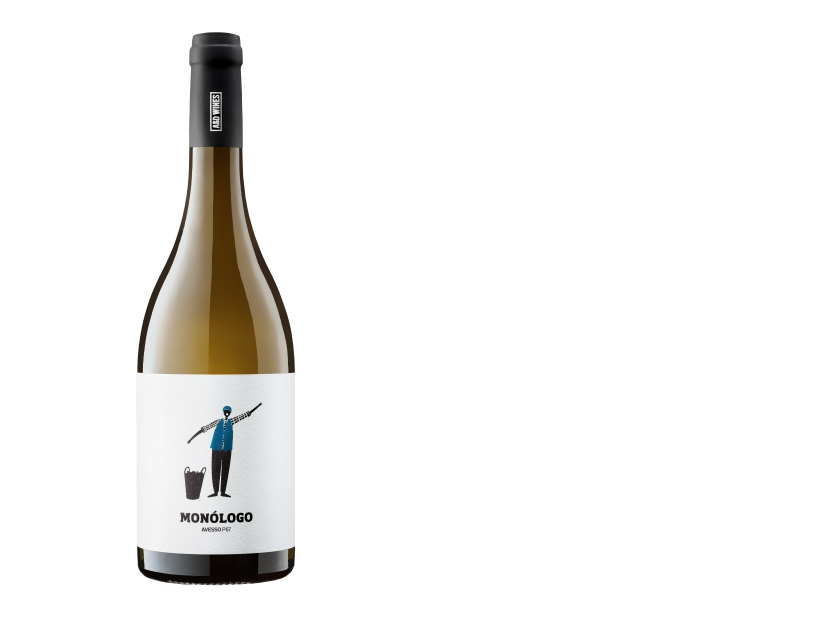
Organically grown in plot P67, A&D Wines Monólogo Avesso P67 2018 has aromas of pear and passionfruit with a hint of peach. The acidity is nicely-integrated into the wine’s character: smooth and silky with a lingering, delicate finish.
According to the owners, the goal of Monólogo is to enable each parcel and varietal to express itself fully with minimal intervention. In that regard, A&D Wines Monólogo Avesso P67 2018 is a lovely expression of Avesso: roundly voluminous with a pleasing freshness redolent of sweet pineapple and nectarine. A wine with tension and character, A&D Wines Monólogo Avesso P67 2018 exhibits the potential to age well.

Quinta das Arcas Trajadura Escolha 2015: According to many vintners in Vinho Verde, the marketplace demands fresh and youthful wines from the region—but when the winemaker holds back, the results can be deeply complex.
Founded in 1985, the family-owned Quinta das Arcas utilizes nearly 500 acres of vineyards to produce wines with a minimal impact on nature—and in 2012, the estate produced its first certified organic wine. At the flagship estate, over 100 acres of vines are more than 30 years old.
The oldest Trajadura vines are used to produce Quinta das Arcas Trajadura Escolha 2015, a monovarietal that highlights the delicately-flavored Trajadura grape, which is notable for its low acidity. Organically-grown and handpicked, the grapes are fermented in French oak with a short sur lie aging that enhances the wine’s creaminess and depth.
Yellow-gold in color, Quinta das Arcas Trajadura Escolha 2015 reveals ripe tropical fruit with hints of apple and pear on the nose. The full-bodied mouthfeel is marked by a juicy firmness. On the palate, there’s honey and almond, pineapple, and kumquat followed by a persistent finish. Distinctive and complex, this is a wine that serves as testament to the aging potential of Vinho Verde wines.
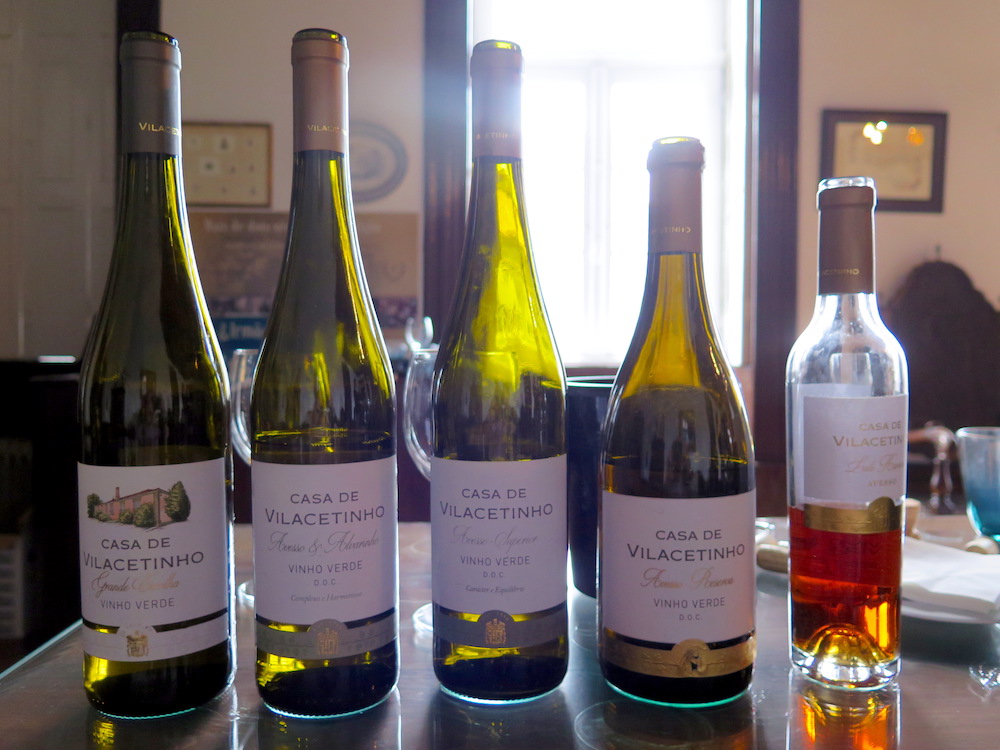
Casa de Vilacetinho Avesso Reserva 2016: Originally part of the Benedictine monastery of Alpendurada, Casa de Vilacetinho was established in 1790 as one of the first wine producers in the Vinho Verde region. So exceptional were its wines that they were served to Queen Elizabeth II on her state visit to Portugal in 1957.
As an Avesso monovarietal, Casa de Vilacetinho Avesso Reserva 2016 offers another perspective on the region’s “reverse” grape. Fermented and aged in French oak barrels for one year, this is an Avesso with character and complexity that displays the structure of a grape variety with longevity. There’s a fresh minerality followed by notes of vanilla and dried fruit with hints of nutmeg—all of which makes for a beautiful expression of Avesso’s aging potential.
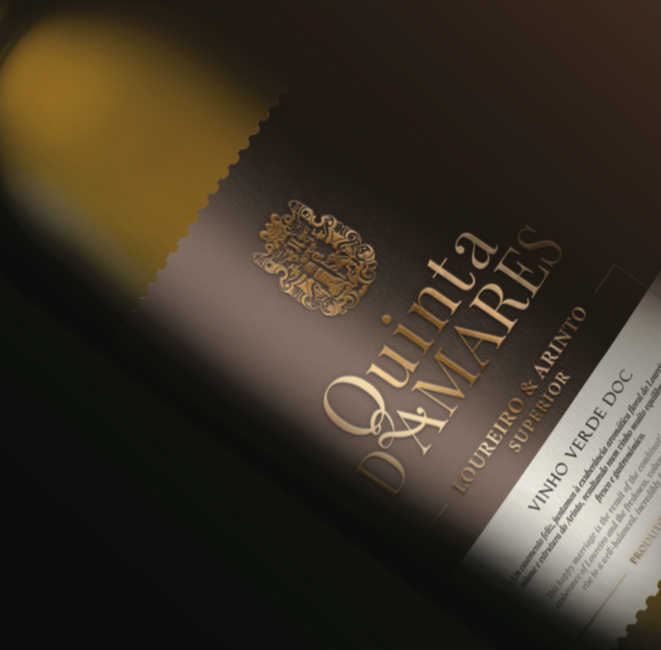
Quinta D’Amares Loureiro & Arinto Superior: Located in Amares, Quinta D’Amares adjoins an 11th-century monastery and a 17th-century aqueduct. With approximately 125 acres of vineyards, the southerly-facing winery produces exceptional wines reflective of the estate’s illustrious history.
Consider, for example, Quinta D’Amares Loureiro & Arinto Superior, a fortuitous pairing of the floral Loureiro alongside the volume and structure of Arinto. Young and vibrant, this lemon-yellow wine exudes white flowers and ripe apple on the nose with a balanced body marked by crisp freshness.
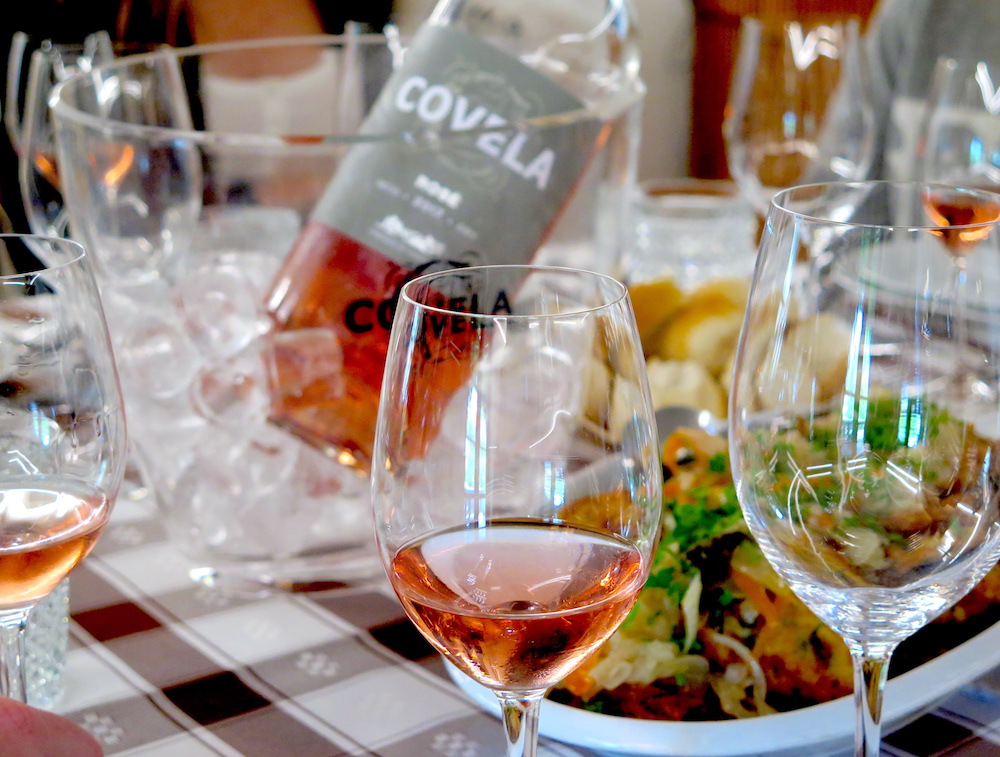
Covela Rosé: One of the most remarkable estates in the Vinho Verde region, Quinta de Covela clings to a natural amphitheater high above the Douro River. Dating back to the 16th century with remains of the original Renaissance manor house and chapel, the 111-acre estate provides panoramic views of the extraordinary landscape. During the 20th century, Covela belonged to the acclaimed film director Manoel de Oliveira who received the estate as part of his wife’s inheritance.
Few locales are more picturesque—and particularly when sipping Covela Rosé beneath a wisteria pergola. A monovarietal of 100% Touriga Nacional, Covela Rosé employs the traditional rosé method for a classic expression of Portugal’s most emblematic red grape. The result is a pale salmon pink dry wine with elegant body and balance. Fresh red berries commingle with rose petals and a fresh acidity that makes this wine perfect for pairing with picnics and pools—and Asian cuisine.
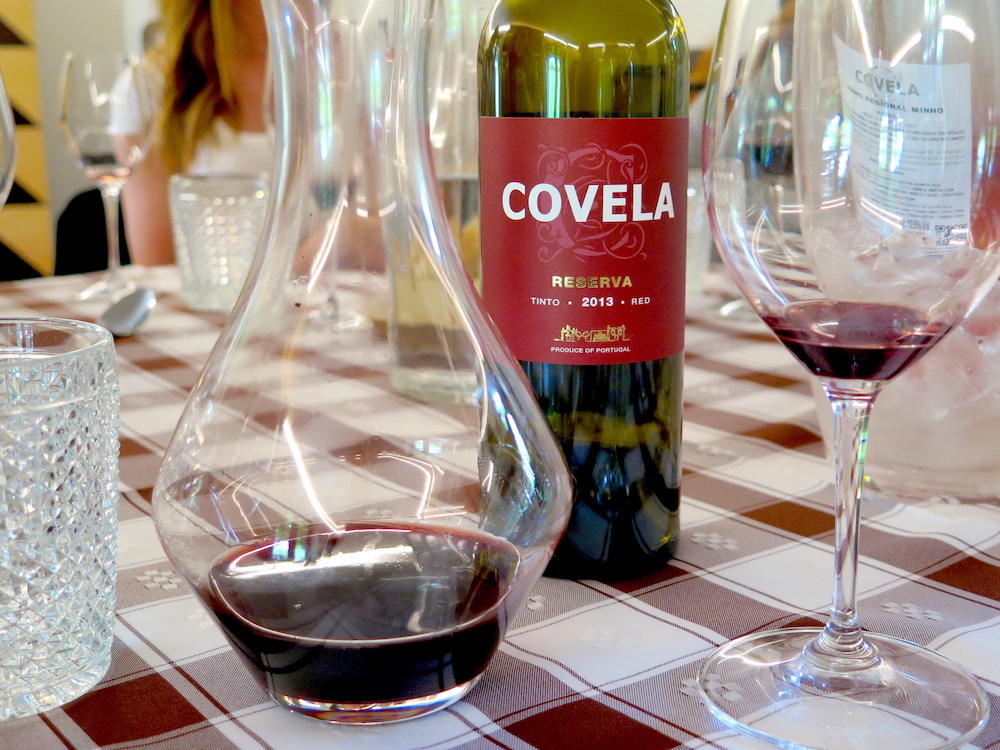
Covela Reserva Tinto 2013: Visitors to Covela who choose the reserva wine tasting might find themselves marveling—and particularly when sipping Covela Reserva Tinto 2013, an impressive blend of Touriga Nacional, Cabernet Sauvignon, and Merlot Noir. You might be forgiven for imagining that this wine derives from a region far from Vinho Verde for this is a deep ruby red wine of profound complexity.
The granite soils of Covela’s southerly-facing amphitheater on the right bank of the Douro river are complemented by cool winters and hot, dry summers with maritime influence. Organically-farmed, the grapes are hand-picked and manually sorted—and the wine is aged in French oak for 19 months. The result is a wine dominated by ripe black fruit and dried flowers with notes of black pepper, vanilla, and clove. The silky tannins are in perfect harmony with the wine’s vibrant structure and refreshing acidity, which is followed by a long and elegant finish.
While Covela Reserva Tinto 2013 has the potential to be cellared for a decade or more, there’s another, perhaps more pressing, reason to drink it now—and that is to remind consumers of the very great potential that persists in the Vinho Verde region.


